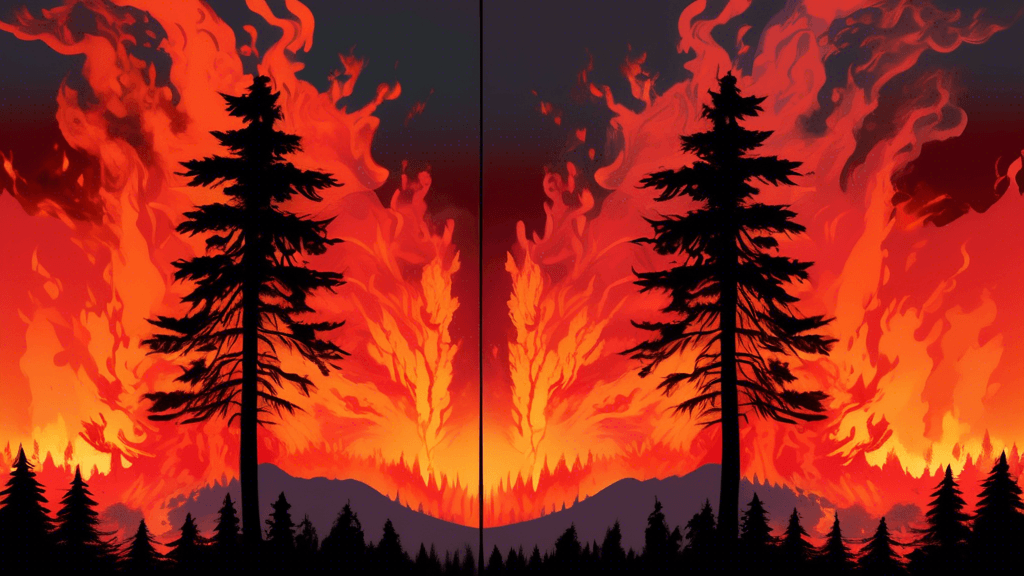
Fire in Nature: From Stunning Sunsets to Devastating Wildfires
Share
The Dual Nature of Fire: A Force of Beauty and Destruction
Fire, one of nature's most powerful elements, presents two dramatically different faces to the world. On one hand, we witness its aesthetic majesty in the form of breathtaking sunsets and controlled campfires that spark tales and traditions. On the other, its destructive power unfolds in the wildfires that ravage landscapes and communities. Exploring this dual nature not only deepens our appreciation of fire's role in natural ecosystems but also underscores the urgent need for sustainable environmental practices.
The Aesthetics of Fire: Sunsets and Controlled Flames
Have you ever found yourself staring in awe at a brilliant sunset, captivated by its vivid colors? Fire, in this benign form, colors our skies with hues that painters struggle to capture and photographers chase around the globe. But what exactly turns our ordinary skies into these magical canvases?
- Atmospheric particles scatter sunlight, filtering out shorter wavelengths and leaving behind reds and oranges.
- Volcanic eruptions contribute fine ash to the atmosphere, often leading to more intense sunsets.
- Human-made pollutants can also amplify sunset colors, though this beauty is a byproduct of environmental harm.
The beauty of a sunset can be attributed to the interplay between light and the Earth's atmosphere, notes environmental scientist Dr. Linda Grey. While we enjoy the view, it's crucial to understand that some of these sights come at the cost of our environment's health.
The Devastation of Uncontrolled Wildfires
Conversely, fire's destructive capacity is never more apparent than in the face of a raging wildfire. These infernos, often exacerbated by human activity and climate change, pose serious threats to biodiversity, human lives, and property. The statistics paint a grim picture:
- According to the National Fire Protection Association, wildfires in the United States alone have consumed an average of 7 million acres annually over the past decade.
- The 2018 California wildfire season was recorded as the deadliest and most destructive, highlighting a trend towards increasingly severe fire seasons.
Wildfires not only destroy homes and landscapes but also create long-term ecological and economic challenges. The severity of recent wildfires can be directly linked to climate change and poor land management practices, states fire ecologist Dr. Rebecca Torres. Effective management strategies are essential in mitigating these disasters.
Fire Management: Balancing Ecosystem Needs and Human Safety
Understanding fire's role in ecosystem dynamics is critical for developing management practices that prevent large-scale destruction while maintaining the ecological benefits of fire. Controlled burns, for example, play a key role in many ecosystems by helping to reduce fuel loads, recycle nutrients, and maintain biodiversity.
However, implementing such practices requires careful planning and consideration of various factors:
- Weather conditions, such as wind and humidity, which can dramatically influence fire behavior.
- Vegetation types, which burn differently and thus require different management strategies.
- Proximity to human communities, where safety must be prioritized to prevent loss of life and property.
Managed fire is a powerful tool in our ecological toolbox, explains Dr. Grey. By using it wisely, we can maintain the health of our ecosystems while protecting our communities.
Conclusion: Harnessing and Respecting Fire's Power
The dichotomy of fire as both a creator and a destroyer is a poignant reminder of nature's complexity and power. As stewards of the Earth, it is our responsibility to understand and respect this element, balancing its benefits and dangers through informed, sustainable practices. By embracing both the beauty and the beast that fire represents, we can protect both our planet's ecological wealth and our own livelihoods.
Are you ready to learn more about effective fire management practices and contribute to safeguarding our environment? Engaging with local environmental organizations and supporting policies that promote sustainable land use can help ensure that fire remains a friend, not a foe, in our natural landscapes.





